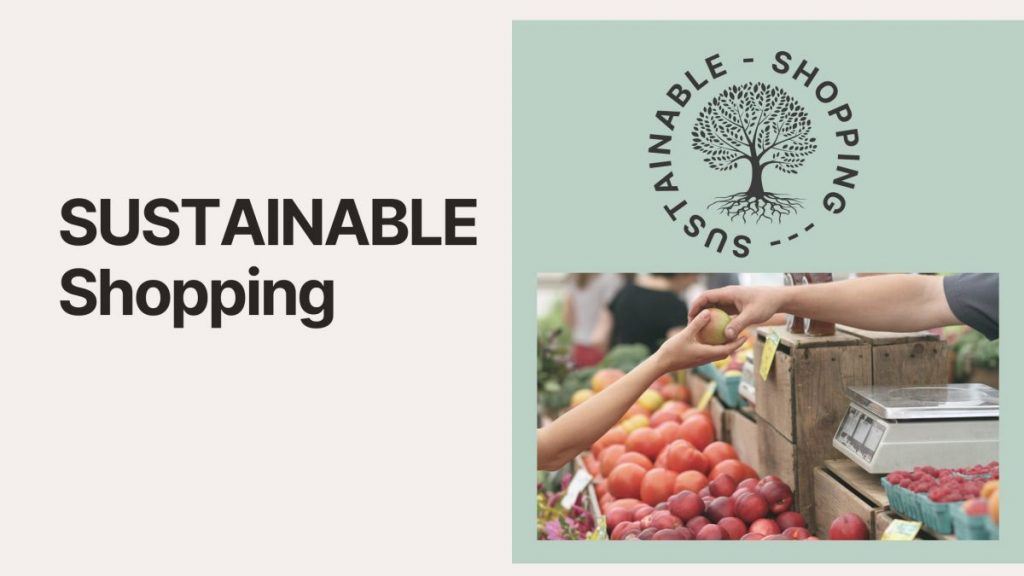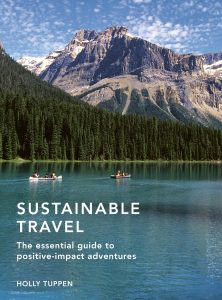Finding sustainability examples in everyday life can be easier than it seems! In this article, we will go through 4 easy examples of sustainability that everybody can quickly start practicing. It might sometimes seem that making our lifestyles sustainable is just too big of a task for a single person to make any real difference, and although the impact we can make all on our own may be small, if every person who’s capable of making the lifestyle changes that are required to make our way of life more sustainable, we would soon be living in quite a different world.
How exactly can we make sustainability a real part of our lives? What are some unsustainable habits that we could fix, and what to do instead?

If you are looking for ways to be sustainable in everyday life, you may not realize that often you can achieve this with simple gestures. Here are 4 interesting sustainability examples in everyday life!
Saving Electricity can be easy!

Among the examples of sustainability in everyday life, reducing your power consumption is for sure the first one to consider. This is a simple and impactful way of living more sustainably.
It’s a good idea to switch off anything that you’re not using at the moment or look for a smart socket powered by AI (artificial intelligence), a green technology example that can help you to avoid wasting electricity. Many of us will leave our TV switched on nonstop for instance, or random appliances in the kitchen, draining energy even when we’re not using them. Don’t forget about your computer either, especially if it’s a more powerful one, such as a gaming PC. Consider shutting it down if you won’t be using it for a couple of hours or more.
If a lot of your appliances, such as your microwave or washing machine, are very old or inefficient, you have a lot to gain by replacing them with better models that use less power to do the same thing, or better. The initial cost might seem large, but the long term benefits to your savings and to the environment are more than worth it. This is important for your lightbulbs too, so make sure you’ve swapped any old incandescent bulbs for more efficient and longer-lasting LED light bulbs.
Energy efficient lighting is also one of the remarkable environmental sustainability examples of recent years.
You could also save energy with how you use your appliances. For example, putting your washing machine on a lower temperature than usual will also save a lot of electricity that would have been used to heat the water, and you should also try air-drying your laundry instead of machine-drying where possible.
If you have one, your air conditioner is perhaps the most important appliance in your home to be careful with. Worldwide, air conditioning alone accounts for about 10% of all electricity consumption, and that percentage is rising, and as a result, it is a significant contributor to worsening climate change. A big problem with air conditioners is that many of the models people purchase are incredibly inefficient, so if you can, purchasing a more efficient unit is a great investment. But, regardless of its efficiency, you should only use your air conditioner only when it’s really needed.
Some of these little changes may save only tiny amounts of power on their own, but if you put together all of the electricity that every individual appliance uses, it all adds up to a huge amount in the long run. Being more careful with all of the electrical appliances in your home will save you a lot of money in the long run as well as help you live more sustainably.
Traveling Sustainably and green tourism

Other examples of sustainability in everyday life are traveling sustainably and practicing green tourism (or geotourism, ecotourism, and sustainable tourism as well). Those can be tricky sometimes, but they may just be the most important area of your life to try and do in a sustainable way.
The ideal way to do this is to walk and/or cycle everywhere you can. Not only will this save on costs for your car, it’ll also give you extra exercise. If you have to travel long distances regularly, to work for example, and it’s too far away for you to walk or cycle there, see if you can use public transport instead of a car. It’s far more sustainable for a lot of people to travel in one large vehicle than all in their own vehicles.
But, what about long distance journeys? For some of us, using air travel may have the largest effect on our sustainability out of anything else in our lives, as airplanes release a huge amount of greenhouse gases, and the per-person amount of these emissions is very high. As a result, regularly traveling by air is perhaps the most unsustainable activity you’re likely to do.
Air travel probably won’t become much more sustainable anytime soon, so if you have a choice, take a look at what other options you have for long distance travel instead of taking an airplane.
A great idea is to try and find some good holiday destinations, such as an eco lodge much closer to you that you can reach without air travel. Obviously, most of us will have no choice but to take a very long distance or overseas journey at some point, and anything other than air travel is quite impractical for this. But even when you have to travel by air, you can still make a difference by doing your research and choosing an airline that is trying to be more sustainable. You should also try to pack more lightly if you can, fly in economy class, and choose a flight that takes a direct trip to your destination, which reduces flight time.
When you’re at your destination, you can also make a big difference by being careful about where you stay and what activities you do. When looking for a hotel, restaurant or other location to use during your stay, try taking a look at smaller, local shops and businesses. This will support the local economy so that you give back to the community you’re staying in.
Finally, if you travel with your car, don’t forget to switch on your cruise control to save gas! You can also consider the pros and cons of Drive Safe and Save to further reduce fuel consumption and get a discount on your car insurance. Both the environment and your pocket will thank you for that!
If instead you still want to experience an exotic trip, then you can at least choose a venue that is among the great sustainable tourism examples around the world. This will allow to at least minimize the environmental footprint of your stay.
Suggested read:
Sustainable Travel: The essential guide to positive impact adventures
★★★★★ 4.4
Looking to explore the world while making a positive impact on the environment and local communities? Look no further than “Sustainable Travel: The essential guide to positive impact adventures” by Holly Tuppen. This comprehensive guide offers practical and achievable advice for responsible travel, covering topics such as reducing your carbon footprint, embracing slow travel, and benefitting local cultures. With regenerative travel experiences and expert interviews included, this book is a must-read for anyone looking to tackle the climate crisis and travel in a way that supports nature and people. Plus, with 15p from each copy sold going to the World Land Trust, you can feel good about your purchase too.
Food: Eat Sustainably

There is a lot of different information to cover when it comes to finding sustainable ways to eat, but the biggest issue is probably about meat. Eating meat, in general, is very unsustainable, as the production of meat involves so much environmental damage, cruelty to animals, and contributes a huge amount to greenhouse gas emissions.
Becoming a vegetarian is one of the best choices you can make to have a more sustainable lifestyle, but if you’re not able to give up meat completely, there are still ways you can reduce your impact by a lot.
Many of us eat meat every day, or even in every single meal. Simply reducing the amount of meat you eat is an easy action to take and makes a difference. Another important thing to do is to change what meat you eat. The production of red meat, like pork, lamb, and especially beef, has by far the worst impact on the environment compared to other kinds of meat. Poultry is somewhat better, and although there are many environmental problems resulting from fishing, fish is generally the most sustainable kind of meat you can eat.
Perhaps more important than what exactly you eat, however, is where you get it from. Purchasing meat and other foods from local and responsible sources will make an immense difference. Not only will your food be sustainably sourced, and with far less cruelty involved in its production, but your money also helps to support those smaller farms and businesses too.
A growing number of people are switching to vegan burgers and thinking about going vegan to protect the environment. However, they probably are not aware of the negative effects of veganism on the environment. Recent findings show that a flexitarian diet may be a more sustainable option instead!
Finally, it is not only essential to eat sustainably, but also to choose eco-friendly drinking water. The classic bottled water we find in supermarkets is actually very polluting due to both the plastic waste it is causing and the emissions due to its transport.
There are more sustainable alternatives to bottled water, this generally involves having a tap water purifier at home, allowing you to get plenty of purified water at a fraction of the cost of bottled water.
Another possible alternative is distilled water, which can also be prepared at home with a distiller or DIY with common household items. Distilled water is more energy-intensive than purified water so getting a water purifier is more eco-friendly.
There are also other pros and cons when you compare purified water vs distilled, including some health implications. The choice would be down to personal preferences and situations.
Let’s make sustainable choices for what we eat and drink, because it is from apparently small things like this that we can change the world and preserve our planet.
Sustainable Shopping

Another great example of sustainability in everyday life is to shop local, buy less stuff in general and find ways to make your possessions last longer.
Most of us are guilty of buying things that we don’t really need and never end up using, and of always buying brand-new products when second hand ones would do just fine. We can make a big difference by changing these habits, because the more second hand products people buy, the fewer resources we use to create new ones.
Many of the things you’re used to paying for could also be done for totally free. For example, reading. Instead of buying new books, take a look in your local library and see if you could be reading the books you wanted for nothing. If you would rather own them yourself, then buying second hand ones is just as great, and if you purchase them in charity stores, for instance, your money for them will also be going to good causes.
So as well as trying to limit your spending when you go to the shops, try taking a look around your house for things that you’re unlikely to actually need, such as old clothes, books or furniture, and give them away to other people or to a charity shop. To you, they may have little use now, but they could easily find a new life with somebody else, so prevent them from having to purchase a new product instead.
Something else that’s important to consider is who you buy your products from and how they’re being made. Every time you purchase a product that’s been produced in an unsustainable way, you support that method of production and make it more profitable for the businesses doing it. If you can do some research and figure out which companies and products you should avoid, and take care to purchase sustainable products instead, you’ll be supporting better business practices and your money will make sustainable practices look like a more attractive option to businesses that are looking to change their business methods.
Final Words
Even if you took action to do all of the things in this article, you may still be worried that you can’t do enough and that you’re not really making a difference. Perhaps this would be the case if you were the only person trying to live more sustainably, but you’re not, as you’ll be joining many other people who want to make a difference in the world, however small it may seem. In addition, by showing how easy it can be to move towards a more sustainable lifestyle, your actions may just inspire other people to make these changes in their own lives.
Learn more here:
- IEA: opportunities for energy-efficient air conditioning – The future of cooling
- Sustainable Travel: The essential guide to positive impact adventures – By Holly Tuppen (sponsored)
- Harward University – Sustainable eating
- Livekindly – How to Practice Sustainable Shopping


